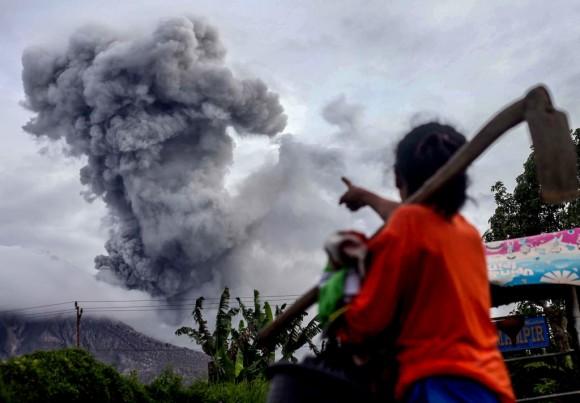Which threat is greater for humanity than comets and asteroids crashing from outer space?
According to one scientist from NASA’s Advisory Council on Planetary Defense, it’s a supervolcano sitting beneath one of the most beautiful places in America and the world—Yellowstone National Park.
The Yellowstone Volcano gets regular media buzz because it explodes every 600,000 years. The last time it exploded was about 600,000 years ago.
A swarm of earthquakes hit the Yellowstone region this year, raising further fears of an apocalyptic scenario. If the volcano explodes, a nuclear winter would follow and may cause humanity to go extinct through starvation.

An Indonesian villager gestures as Mount Sinabung volcano spews thick volcanic ash, in Karo, North Sumatra, on July 8, 2017. AFP/Getty Images





